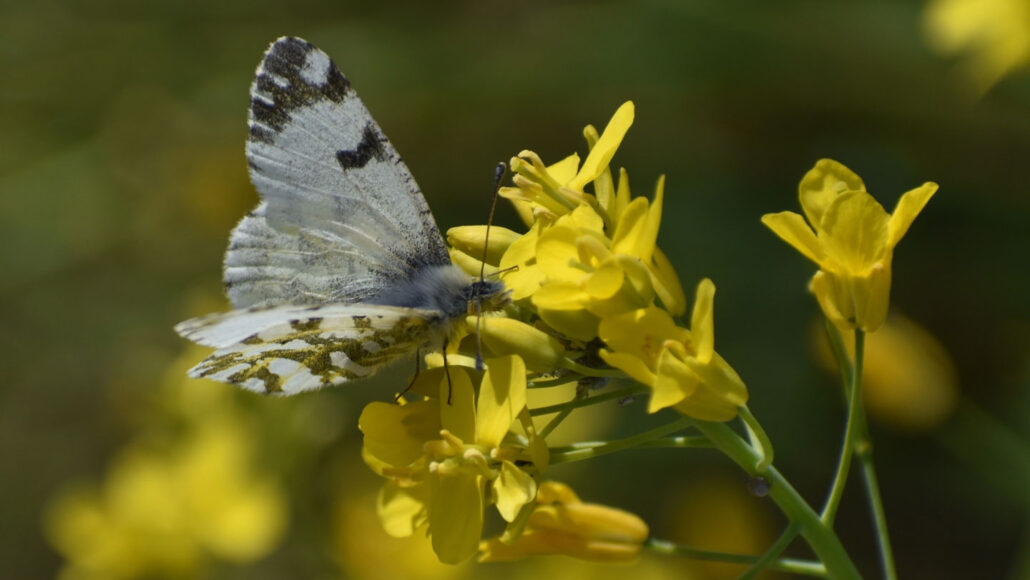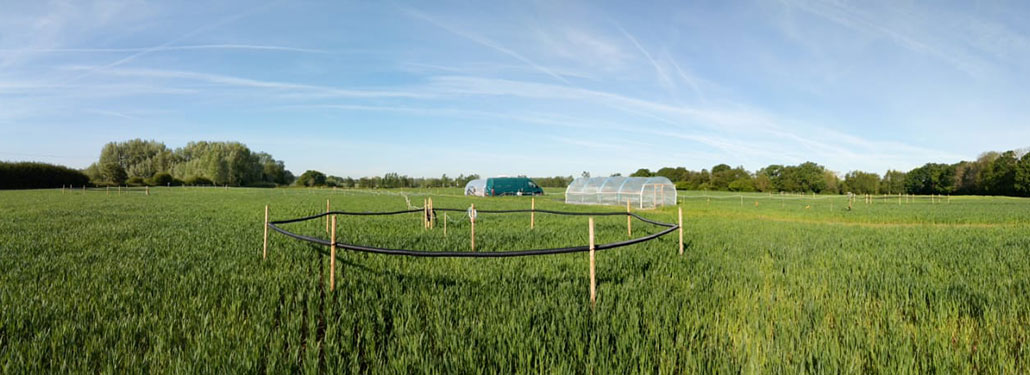Bees and butterflies struggle to find flowers in polluted air
Tailpipe emissions from cars and trucks makes it harder for pollinators to find food

This butterfly is sipping nectar from flowers on a black mustard plant. Pollution makes it harder for butterflies and bees to find nectar and pollinate flowers.
Philip Stewart/iStock/Getty Images Plus
By Laura Allen
Lacking a nose, insects such as butterflies and bees use their antennae to detect scents. Those scents help them find food and more. What happens, though, when air pollution overwhelms the scents on which these critters depend? Those insects become less likely to visit a flower or to pollinate it. That’s the finding of a new study.
People depend on insects to pollinate the plants that make many of the fruits, nuts and vegetables we eat. Past studies had shown urban air pollution might mask the scents insects use to find flowers. For instance, ozone — an ingredient in smog — can break down the scents released by flowers. Computer models predicted this would cause problems for insects seeking flowers for a meal. But scientists weren’t sure that would happen in real life.
James Ryalls and his team decided to find out if it would.
Ryalls is a biologist at the University of Reading in England. Working in a field of black mustard plants, his group crafted a system made up of rings eight meters (26 feet) in diameter. Each area was open, so nearby insects could fly into it. The researchers pumped pollutant gases into these rings. Two rings received diesel fumes. Two more got ozone. Another two got both gases. A final pair of rings was a control and received no added gases.
The tests took place over two summers. During each field season, the scientists counted how many times insects visited the flowers in each ring.
“The results were much more severe than we thought,” Ryalls says. Adding both the diesel exhaust and ozone pollution “caused up to 90 percent less insects to be able to find the flowers that they need for food,” he says. This was in comparison to the pollutant-free rings. In some cases, only some 30 percent of the pollinating insects even entered the circles with piped in pollution.
This surprised the scientists. Levels of the gases being brought in were comparable to what might be found near normal road traffic. The test levels in these fields were actually lower than legal limits in England.
The team shared its findings in the March issue of Environmental Pollution.

An engineering challenge
Counting insects proved easier than getting the pollution into the rings, notes Ryalls. “Instead of being a research scientist, for two years I was more of a part-time engineer.” He spent much of his time working on parts of the system that needed fixing. Along the way, diesel spills occurred. “By the end of each summer experiment I smelt like a petrol station,” he says. One effect: “Insects now avoid me.”
But the hassles were worth it, he adds. The new data show impacts of the air pollution on seven groups of insects including bees, moths, hoverflies and butterflies.
The team tallied insect visits to flowers. Later, they counted seed pods on the plants. Overall, only around seven in every 10 flowers had been pollinated. That means there were far fewer seeds in polluted circles. If these were fruit or vegetable plants, there would have been far less food produced.
The results don’t surprise Geetha G. Thimmegowda. She’s is an urban ecologist at the National Center for Biological Sciences in Bangalore, India. Honeybees can be harmed by air pollution, she’s found. That’s why she commends such field-based studies. Along with lab experiments, they can help guide air-quality limits to protect insects and people. “To have healthy, functioning ecosystems,” she says, “we need to reduce air pollution and keep our environment safe for future generations.”
Indeed, Ryalls notes, seven in every 10 crops that we eat depend on insect pollination. Many insect populations have been falling due to changes in land use, climate change and exposure to pesticides. The results, he says, “suggest that air pollution is another stress on insects that adds to all the other stresses that are causing them to decline.”
This study focused on insects finding flowers. But insects also use smells for communication and attracting mates. If air pollution disrupts those scents too, these tiny animals might face more threats to their survival.
To help pollinators, people can keep the air cleaner by taking fewer trips in gas-powered vehicles. Consider riding a bike, taking the bus or using an electric vehicle. To help boost wild pollinators, plant native wildflowers. And if you have a lawn, Ryalls says to ask your family to consider substituting it for a garden of flowers and pollinator-friendly plants.







